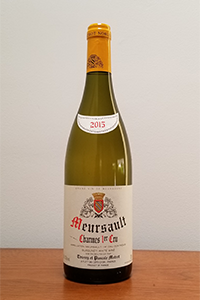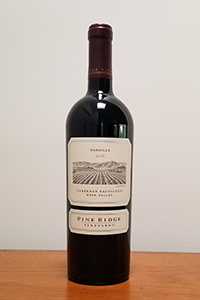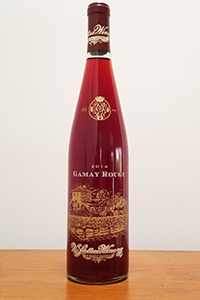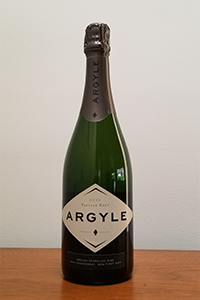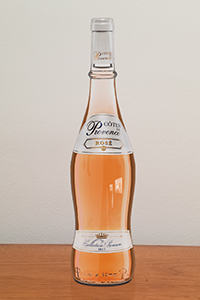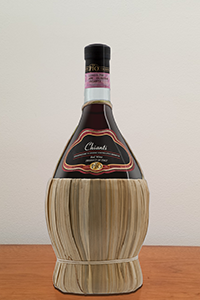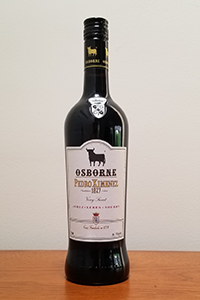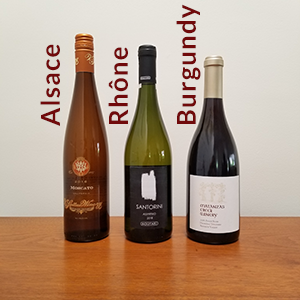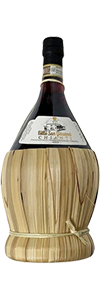Posted by Brent Modzelewski on June 1, 2020
Why are wine bottles different shapes?
Can't we all just get along...
(Bottle Series 3/3)
Part 3 of the Bottle Series, be sure to check out Part 1: Wine Bottle Anatomy and Part 2: Why are wine bottles 750ml?
There are seven main wine bottle shapes, and various derivatives thereof. Most of these bottle shapes are familiar sights wherever you buy wine. But you are probably wondering why certain wines come in specific bottles. Learning the names of the bottles and what wines come in them, won't make you a wine expert, but it will surely make you sound like one at your next wine gathering.
The Seven Main Bottle Shapes
Why are wines bottled into specific bottle shapes?
The answer is simpler than you think. In fact, the wine bottle name gives it away. Varietals common to that region are more often than not, bottled into that specific style bottle for the region. For example, wine made from grape varietals originating in Burgundy will be bottled in a Burgundy bottle, whereas wines made from grape varietals originating in Bordeaux will be bottled in a Bordeaux bottle. Of course, this means you need to know which varietals come from which region, and that is not a trivial task. But look at it a different way, and think of it in reverse. If you know Pinot Noir comes in Burgundy bottle (regardless of the winery location), then it is a safe guess that the Pinot Noir varietal is common to the Burgundy region of France. It is probably no surprise that you will find Pinot Noir, Chardonnay and Pinot Gris wines in Burgundy bottles. Flip flop it and you now know the common varietals to Burgundy. Whereas, you will find Cabernet Sauvignon, Sauvignon Blanc, Merlot and Cabernet Franc wines in Bordeaux bottles. Boom. Just like that, you know the common varietals to Bordeaux. I wish this was an absolute rule, but it is more of a general rule, since there are many exceptions. For example, you will find Zinfandel in a Bordeaux bottle, but Zinfandel's origin is Croatia not Bordeaux. But there isn't a Dalmatia bottle that I know of, so they had to put Zinfandel in some bottle. You can probably guess which wines come in a Champagne bottle and a Chianti bottle. These are two of the most obvious bottles for the type of wine. Chianti is the region in Italy and is primarily made from the Sangiovese grape varietal. Today, a majority of Chianti winemakers shy away from the traditional Chianti bottle, because of the perception that it is cheap table wine that your grandparents would drink. Alsace bottles are typically the vessel of choice for Gewürztraminer, Riesling and Pinot Blanc. All common varietals of the Alsace region and bordering Germany. Shiraz/Syrah and Rhône Blend, commonly referred to as GSM (Grenache, Syrah, Mourvèdre), are found in Rhône bottles (but also come in the more common Burgundy bottle as well, which makes identifying the origin a bit trickier). Port and other fortified wines like Sherry, Marsala and Madeira are bottled in Port bottles. It isn't uncommon for Madeira to come in a shorter fatter port-style bottle. And lastly, you will find rosé wines in Provence bottles. Cotes de Provence produces 80% rosé wines. Do wines taste different from different bottles?
Wine can be bottled in any bottle. But bottling wines primarily holds true to tradition. How a wine tastes has more to do with where it is grown, the climate, the vintage and the terroir. Wines that are intended to be aged will be in a darker bottle to help shield from light degradation, whereas wines in clear bottles are not meant to be aged and should be drunk young. Darker bottles also preserve the color in red wines, which is why you won't find a red wine in a clear bottle.
There are seven main wine bottle shapes, and various derivatives thereof. Most of these bottle shapes are familiar sights wherever you buy wine. But you are probably wondering why certain wines come in specific bottles. Learning the names of the bottles and what wines come in them, won't make you a wine expert, but it will surely make you sound like one at your next wine gathering.
The Seven Main Bottle Shapes
Why are wines bottled into specific bottle shapes?
The answer is simpler than you think. In fact, the wine bottle name gives it away. Varietals common to that region are more often than not, bottled into that specific style bottle for the region. For example, wine made from grape varietals originating in Burgundy will be bottled in a Burgundy bottle, whereas wines made from grape varietals originating in Bordeaux will be bottled in a Bordeaux bottle. Of course, this means you need to know which varietals come from which region, and that is not a trivial task. But look at it a different way, and think of it in reverse. If you know Pinot Noir comes in Burgundy bottle (regardless of the winery location), then it is a safe guess that the Pinot Noir varietal is common to the Burgundy region of France. It is probably no surprise that you will find Pinot Noir, Chardonnay and Pinot Gris wines in Burgundy bottles. Flip flop it and you now know the common varietals to Burgundy. Whereas, you will find Cabernet Sauvignon, Sauvignon Blanc, Merlot and Cabernet Franc wines in Bordeaux bottles. Boom. Just like that, you know the common varietals to Bordeaux. I wish this was an absolute rule, but it is more of a general rule, since there are many exceptions. For example, you will find Zinfandel in a Bordeaux bottle, but Zinfandel's origin is Croatia not Bordeaux. But there isn't a Dalmatia bottle that I know of, so they had to put Zinfandel in some bottle. You can probably guess which wines come in a Champagne bottle and a Chianti bottle. These are two of the most obvious bottles for the type of wine. Chianti is the region in Italy and is primarily made from the Sangiovese grape varietal. Today, a majority of Chianti winemakers shy away from the traditional Chianti bottle, because of the perception that it is cheap table wine that your grandparents would drink. Alsace bottles are typically the vessel of choice for Gewürztraminer, Riesling and Pinot Blanc. All common varietals of the Alsace region and bordering Germany. Shiraz/Syrah and Rhône Blend, commonly referred to as GSM (Grenache, Syrah, Mourvèdre), are found in Rhône bottles (but also come in the more common Burgundy bottle as well, which makes identifying the origin a bit trickier). Port and other fortified wines like Sherry, Marsala and Madeira are bottled in Port bottles. It isn't uncommon for Madeira to come in a shorter fatter port-style bottle. And lastly, you will find rosé wines in Provence bottles. Cotes de Provence produces 80% rosé wines. Do wines taste different from different bottles?
Wine can be bottled in any bottle. But bottling wines primarily holds true to tradition. How a wine tastes has more to do with where it is grown, the climate, the vintage and the terroir. Wines that are intended to be aged will be in a darker bottle to help shield from light degradation, whereas wines in clear bottles are not meant to be aged and should be drunk young. Darker bottles also preserve the color in red wines, which is why you won't find a red wine in a clear bottle.
Wine Nerd Fact Information
Fiasco means flask in Italian, which is precisely the shape of the Fiasco Bottle, more commonly known as the Chianti Bottle.
It was very easy for glassblowers to make a thin, clear, round wine bottle.
Although easy to make, it presented a few problems. Thin glass bottles break easily, not to mention that a round bottom doesn't work well for standing upright on a table.
Also, this bottle was the original bottle for Sangiovese, a red wine, and clear glass allows light to discolor the wine.
Placing the bottle into a straw basket, allows the bottle to sit upright, padded against breakage and blocks light from discoloring the wine.
Once upon a time the basket covered the entire bottle, but along came wine label regulations and the basket was shortened to fit the label.
Wine2Oh Recommended Wine
Disclaimers: We are not affiliated, sponsored or funded for this blog post. It is purely for the love of wine.
Copyright Great Meadow Products, LLC. All rights reserved.

